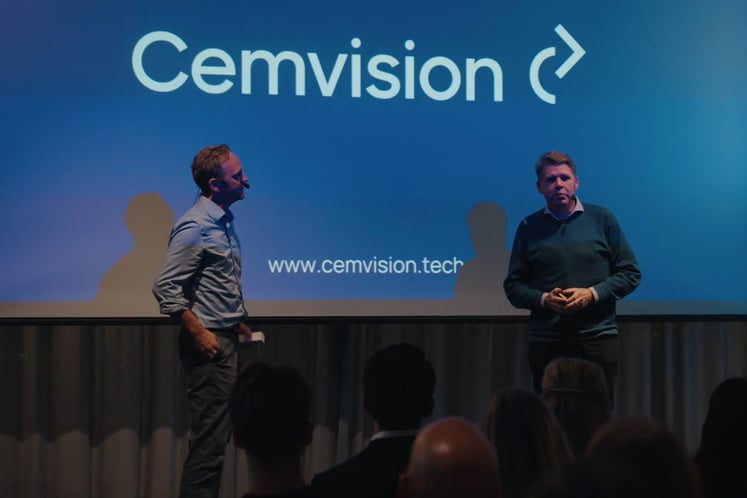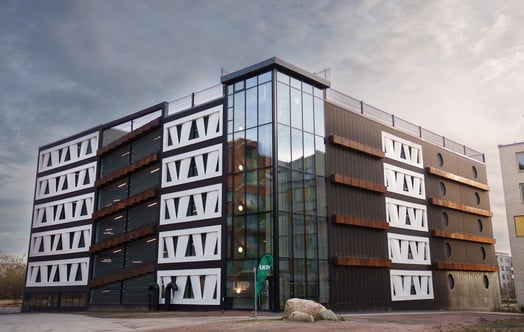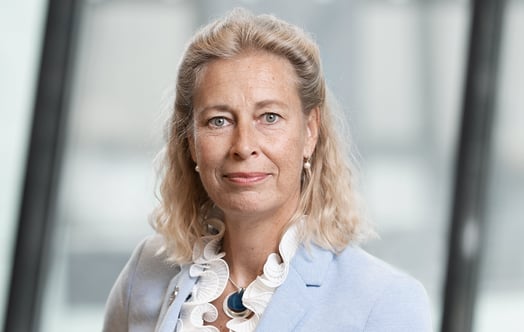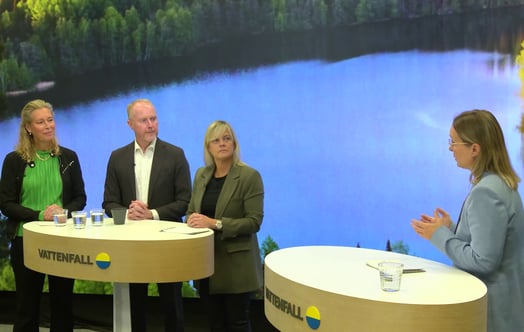Near zero-cement market possible
Vattenfall and Cemvision collaborate to develop a market for near-zero emission cement, a logic next step since the agreement (LOI) for the development and future supply of the cement, was launched earlier this year. And if all value-chain parties are committed a market is possible the coming years.
Video player requires marketing cookies.
To view this content please click here to allow marketing cookies.
In 2024, Vattenfall introduced the partnership with Cemvision to develop near-zero emission cement and a future market in connection with the First Movers Coalition commitments, during a live event in Stockholm.
Vattenfall and Cemvision have entered an agreement (LOI) for the development and future supply of near-zero emission cement. Potentially, Cemvision’s new cement can reduce carbon dioxide emissions by up to 95 per cent compared to traditional cement. Vattenfall can create demand as a customer and contribute with product verification at Vattenfall’s concrete laboratory. Cemvision develops the cement made from recycled residual materials from industries including mining and steel industries.
The next parallel step is to facilitate a market and Vattenfall’s target is to purchase at least the First Movers Coalition (FMC) commitment of 10 percent of near fossil free cement by 2030.
We asked Vattenfall’s head of sustainability, Annika Ramsköld about the progress:
When do you think the market will mature for this new cement?
“Several steps need to be taken by all parties to develop a fossil free value chain, while there is no mature market for it yet and neither are we able to wait for that. I think every single step counts, especially if we get a few pilots going, the market can gradually scale up. And I am an optimist, I am sure that we will have enough material out there by 2030 for Vattenfall to fulfil the FMC commitment.”
“At Vattenfall and Cemvision’s seminar recently, everyone talked about the importance of truly working together throughout the value chain, which was very positive to hear. We have come much farther than a lot of people had expected,” Annika Ramsköld says.
What are the key elements that need to be in place to make a fossil free value chain work?
“There are several key elements that need to be in place to really build the full value chain. First, I think all the different actors along the value chain need to join actively. You need to have the fossil free energy that goes into the processes, and that's where Vattenfall come in. You also need to have the demand side, where you have the actors demanding the fossil free solutions and considering the embedded carbon. Unless we have all actors on board, we won't be able to share the premium cost of the product and of course also share the risks of product development and investments. But the good thing when we work along the value chain is that we also share the knowledge and experience and that we can therefore jointly push on action to happen faster,” says Annika Ramsköld.
Cemvision’s cement has several potential applications, such as foundations for wind power turbines, power distribution and prefabricated concrete elements. Both Vattenfall and its subcontractors could become important new customers for this innovative new product.
Cemvision develops cement made from recycled residual materials from industries including mining and steel industries manufacturing in a process where the Cemvision’s kilns are fueled by fossil-free energy. Compared to traditional cement production, which emits large amounts of carbon dioxide due to the use of virgin limestone and fossil fuels, Cemvision can reduce the carbon footprint by up to 95 per cent.
“This initiative really goes to the heart of the FMC. Vattenfall and Cemvision’s initiative and partnership is a really positive move in the sector, since the cement and concrete sector in general often struggles to scale highly decarbonized products despite the range of innovation on show. A collaboration like this is in order to move towards increasing supply of highly decarbonised cement and move towards an offtake deal of such cement is an important step”, says Daniel Boero Vargas, Industry Decarbonization Lead for Concrete & Cement at World Economic Forum.
“The partnership between Vattenfall and Cemvision is a match made in heaven where we not only partner up in traditional supplier and customer relation. To exemplify, we also bring our products to Vattenfall’s concrete labs, and working with Vattenfall’s electrification experts to evaluate where a Cemvision plant could be located to secure fossil free power supply”, says Oscar Hållén, CEO of Cemvision.
Facts:
- The cement industry currently accounts for about 8 per cent of global carbon dioxide emissions, while demand for cement is expected to grow.
- The production of Portland cement, the dominant cement standard today, contributes to carbon emissions totaling 850 kg CO2e/tonne. Of this, around 60 per cent of emissions are released from the chemical reaction that occurs when limestone is heated, and 40 per cent comes from the use of fossil fuels to reach the high temperatures needed.
- FMC members commit to buying near-zero emission cement or concrete that meets, among other criteria, cement with a carbon footprint below 184 kg CO2e/tonne. Cemvision's new cement Re-ment is expected to be 45 kg CO2e/tonne.
- A building doesn’t consist of 100% concrete and the new cement will have a premium cost which is assessed to be diluted to approximately to 1-2% of a total cost of building a concrete building, for example. Also, the cement is not 100% of the concrete.
- Vattenfall and Cemvision seminar November 26th (länk video) participants: Anna Denell Sustainability Director at Vasakronan AB, Claes Kollberg Co-founder & CTO at Cemvision, Daniel Boero Vargas Industry Decarbonization Lead for Concrete & Cement at World Economic Forum. Andreas Gyllenhammar Chief Sustainability Officer at SWECO AB, Annika Ramsköld Vice President Corporate Sustainability at Vattenfall.




